Last updated on December 9, 2023
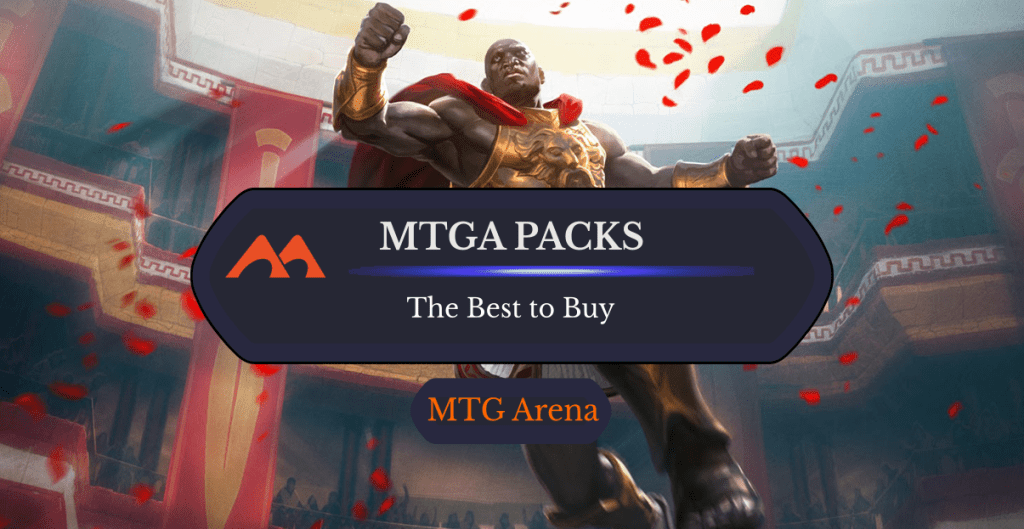
Arena Athlete | Illustration by Jason Chan
Bolstering your MTG card collection is a huge part of the game for lots of players, but even for casual players, collecting is fairly important. Having a large collection means that you have more ways to play and more options to make whatever synergy you’re going for work. Now, this doesn’t have to mean buying every card you’ve ever heard of just to say that you have it.
As a new player, getting new cards is pretty much the first step of the game. You won’t have many when you first start playing MTG Arena, though at least you get some starter cards and decks to get you going in Magic’s digital counterpart. And, let’s face it, if you’re reading this article then you’re probably a new player. Nothing wrong with that, in fact that’s awesome! You’re about to start a crazy journey into one of the biggest card games in the world. Welcome to the (somewhat dysfunctional) family!
But as a new player, things can get kind of overwhelming, and it’s only going to get more so as time goes on until you get to the point where it just isn’t anymore. There are over 20,000 cards in Magic spread out through mover than 80 expansion sets with four new ones released every single year, plus some smaller non-official cards and sets over the years.
So… where the heck should you start? Obviously, you’re going to need to get your hands on new cards. In Arena, this usually means getting packs to open. But which packs are the best to buy in the game?
MTG Arena: Which Packs to Buy
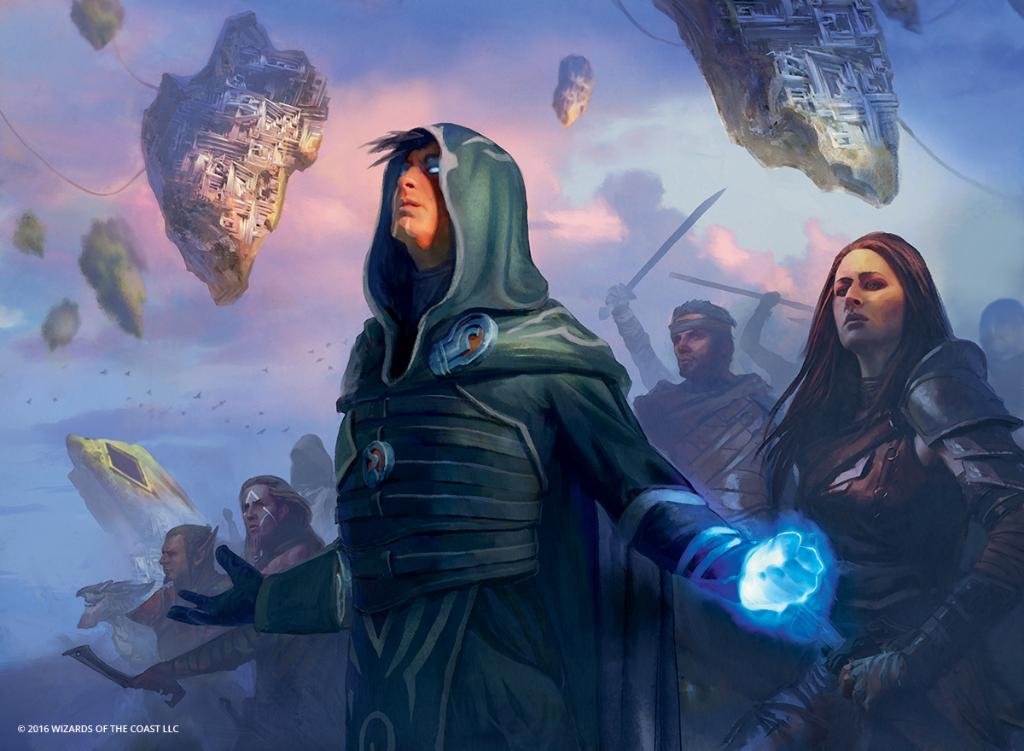
Unity of Purpose | Illustration by Jason Felix
I’ll try to break this down, ‘cause I know how easy it is to feel like there’s too much going on and too much that you need to remember and just decide that you’d rather not. Whether you’re looking to be a casual player or you’re into the competitive scene and want to get there eventually, you start off at the same place. In any case, the first thing to think about is what you want new packs for.
Formats to Consider in MTG Arena
Browse these format options I'm about to lay out on the table, maybe get some games under your belt, and decide where you stand.
I suggest you start with Standard and not Historic. Brawl is great but it’s not super accessible and this isn’t going to be your main format if you play more than once a week. Explorer is still too new to get a good pulse on it, so while you can definitely check it out (especially if you're a fan of Pioneer), I'd still suggest sticking to Standard as your main format to start.
Standard
In Magic, there are plenty of different game formats that you can play. The most widely known and played is Standard. This is also the format that needs the most thought when it comes to buying packs for deckbuilding because the sets you can use in this format change every year.
This is called Standard rotation. I would suggest starting with this format if you’re brand-spanking new to Magic and don’t really know much about how to play or how it works. Both casual and competitive play are open avenues here.
Brawl
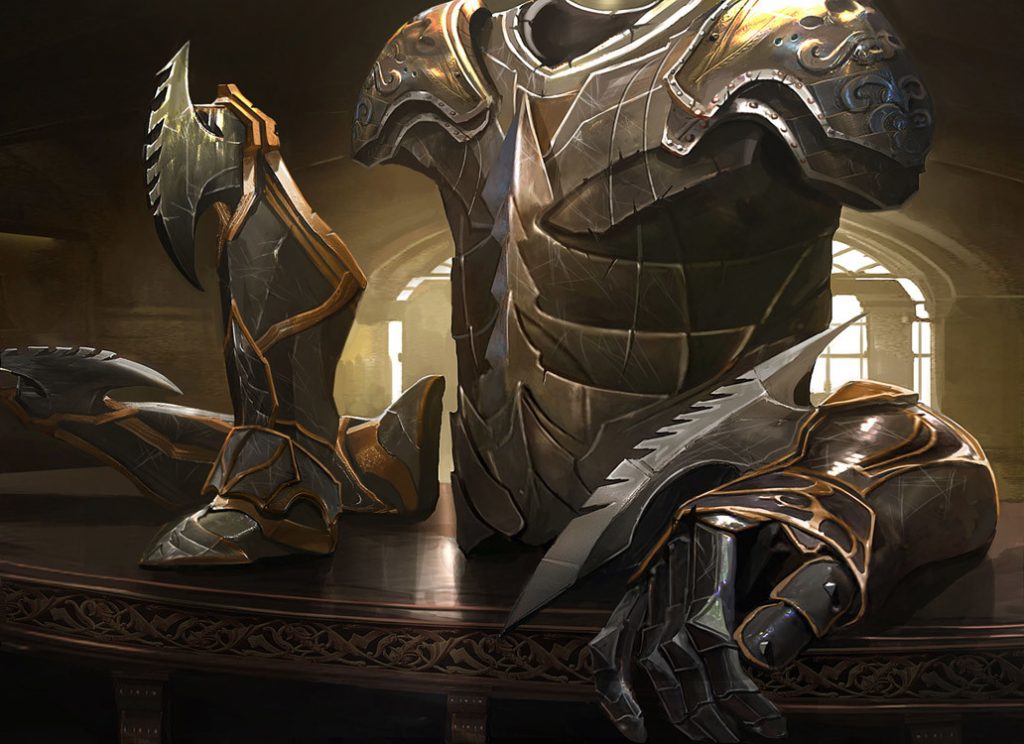
Brawler's Plate | Illustration by Jung Park
Brawl is another very popular format on MTG Arena, mixing Standard and Commander, a popular paper format, into the best of both worlds. This format uses the same card pool as Standard, so you’ll need to follow along with the rotation here too if this is your format of choice.
Deckbuilding and play are very different from Standard, though, so while you’ll use the same cards, the way you use them won’t be the same. This is a popular and fun format, but it’s somewhat gated on Arena right now, so you might not always be able to play it. There’s currently no way to play this competitively and it was pretty much created with the intention to be a fun, casual format.
Historic
The next format that you can get into in Arena is Historic, which allows you to use all the sets on the client to make your deck. This format is basically Standard with a larger card pool and different banlist, which is great for players who have cards from older sets but may not be the best place to start for new players.
After all, cards from older sets can only be played in Historic and your options for it—at least at the moment—are very limited. I wouldn’t advise getting packs that are only playable in Historic unless you know that Standard isn’t your cup of tea. Otherwise, I’d suggest sticking to Standard and maybe Brawl for a good time, at least until your Standard-legal cards end up rotating into Historic anyway.
Explorer
The newest format for players to explore and enjoy is, well, Explorer! Explorer is a new, non-rotating format that is meant to eventually become Pioneer on MTGA. It starts as its own format, similar to Historic, but will eventually receive new packs and cards to better mold to the Pioneer shell.
It can be hard to know what packs are relevant for Explorer now, especially before the set's own packs come out. But it currently has the same roster of cards as Historic, minus the anthologies and a separate banlist.
From the Ground Up: Standard Deckbuilding
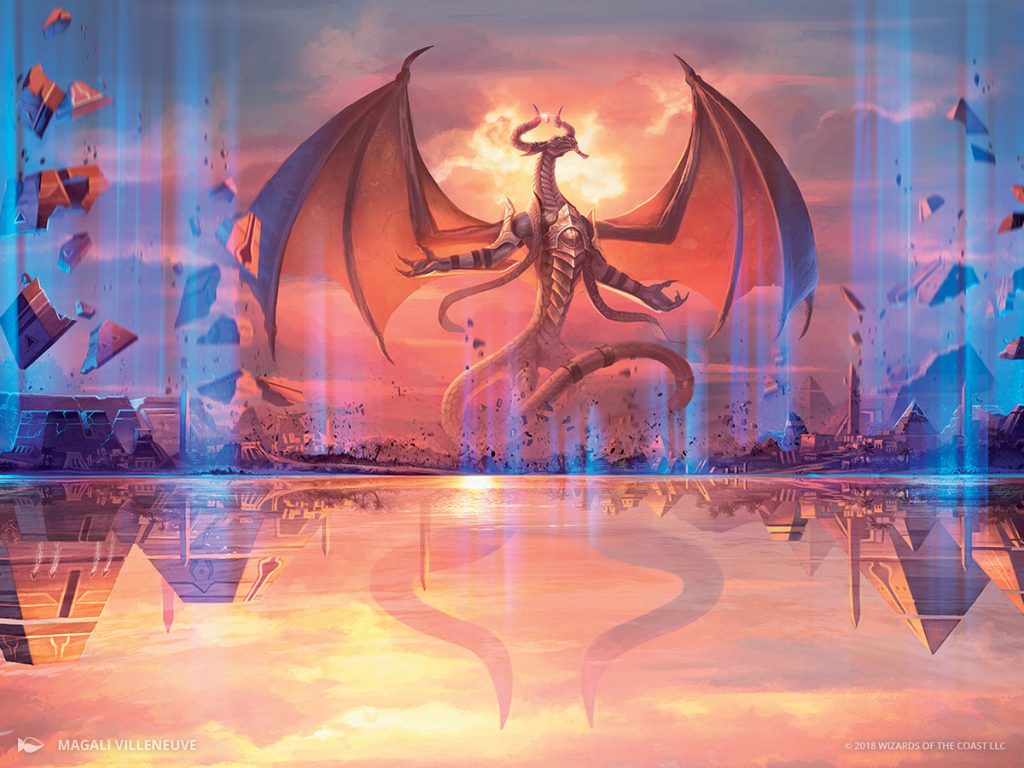
Patient Rebuilding | Illustration by Magali Villeneuve
All right, so Standard is pretty simple, thankfully. Take a look at Wizards’ page on the format for a quick intro to the deckbuilding rules.
Just a quick note: Arena has a maximum deck size of 250 and while it might be tempting to just stuff all the cards you can into a giant 250-card deck (especially if you’ve recently been foiled by a decent mill engine), please don’t. It might work every once in a while if you get lucky but, for the most part, you’re going to get stuck with the worst cards in your deck and none of them are going to work together. Stick to 60-card decks by picking the best spells that have synergy and complement each other when played. You’ll have a much easier time and rely less on luck since it’s much more likely you’ll draw the good cards that you need.
Starting Your Collection
First things first: make sure you’ve gotten all the Arena starter decks. The basic mono-colored ones and their new card “upgrades” are given to you as you complete the Color Challenges, and then you unlock the dual-colored starter decks by completing daily quests, daily/weekly wins, and leveling up.
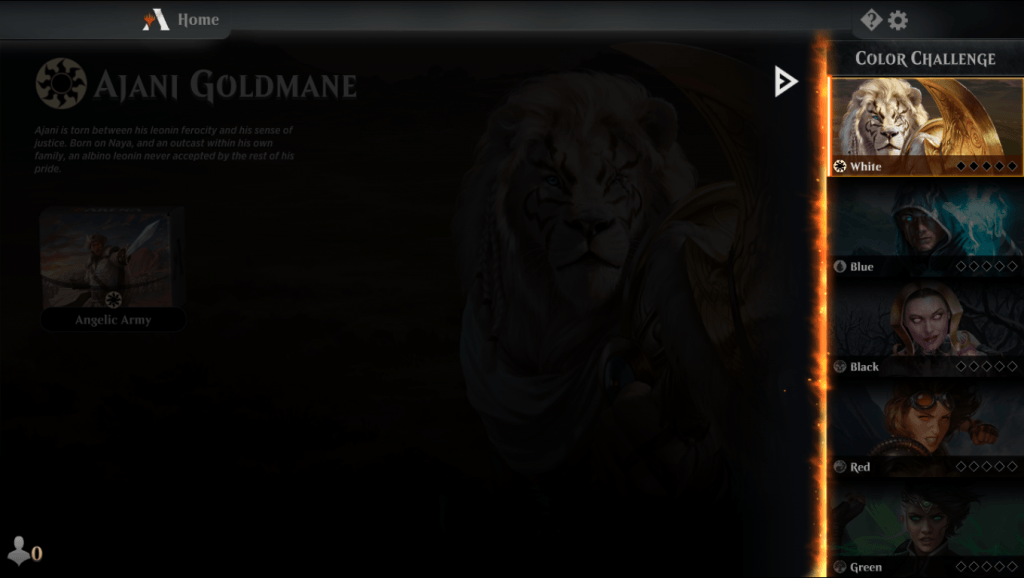
With a humble little collection to speak of once you’ve gotten all the starter decks, it’s a good jumping-off point. You’ll also have gotten some packs on the way thanks to the current set’s Mastery system pictured below.
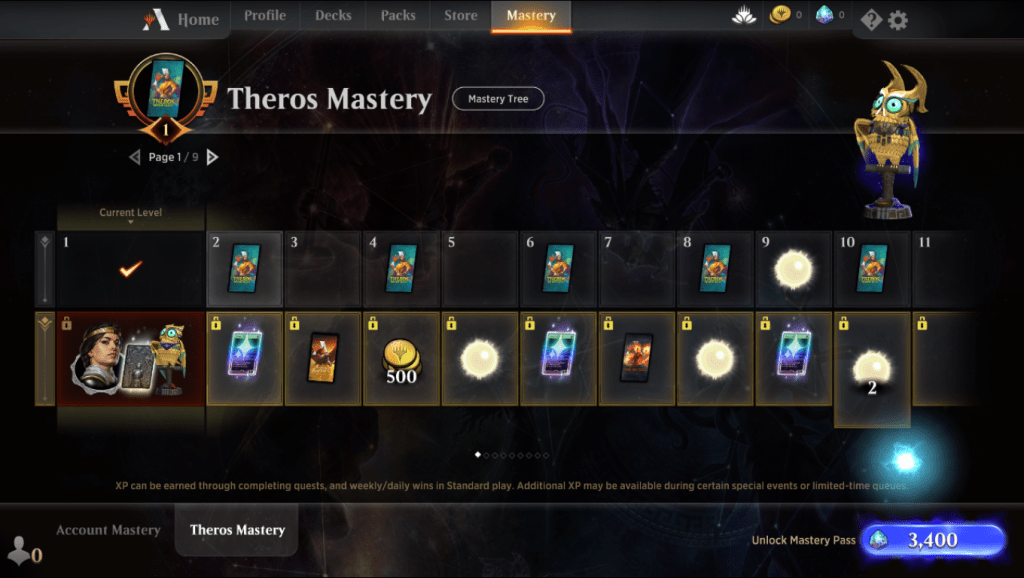
Next up, make sure you’ve used all the current Promo codes to unlock some sweet free card styles, boost yourself a bit with a Mastery level, plus (most importantly) a bunch of free packs! This will give you a much bigger card pool to play with and a great head start on your road to Standard domination.
Now that you’ve got all these pre-con decks and extra cards laying around, it’s time to look at upgrading them to make ‘em, well, better.
Upgrading the Starter Decks
You probably would’ve noticed that while you were being rewarded with mono-colored cards through the Color Challenges, you were prompted to complete a “Deck Upgrade” each time.
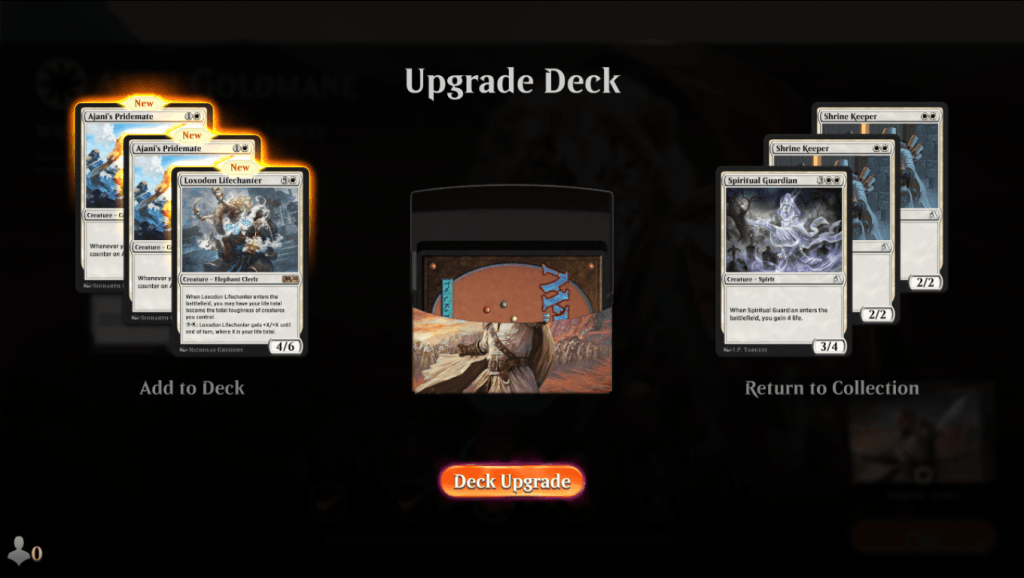
It’s time to do a little… messing around in there now, though. Mono-colored can be just as powerful, though, so these may also be worth tweaking if you’re partial to a specific color and its unique mechanics and synergistic opportunities.
The most important thing you need to keep in mind when building a deck is synergy, yes, but also how viable that synergy is. Do you need a handful of specific cards to make it work, or do all your cards push you towards the same goal? Are only a small number of cards in the deck going to get you to the win, or can just about any combination push you there? This is basically the difference between jank and non-jank.
Obviously you’re going to get unlucky sometimes, whether it be in the draw or the deck you’re paired against, but you should have a solid foundation where even the worst card combos you could draw could, at the very least, hold you above water until you catch your breath.
If you’re stuck, check online for budget decks to get you started. Eventually you’ll work your way up to a tier 2 or even tier 1 deck, but budget decks provide a good jumping off point using commons and uncommons and cards you’re likely to have as a new player.
The Crux of the Matter: Which Set to Get
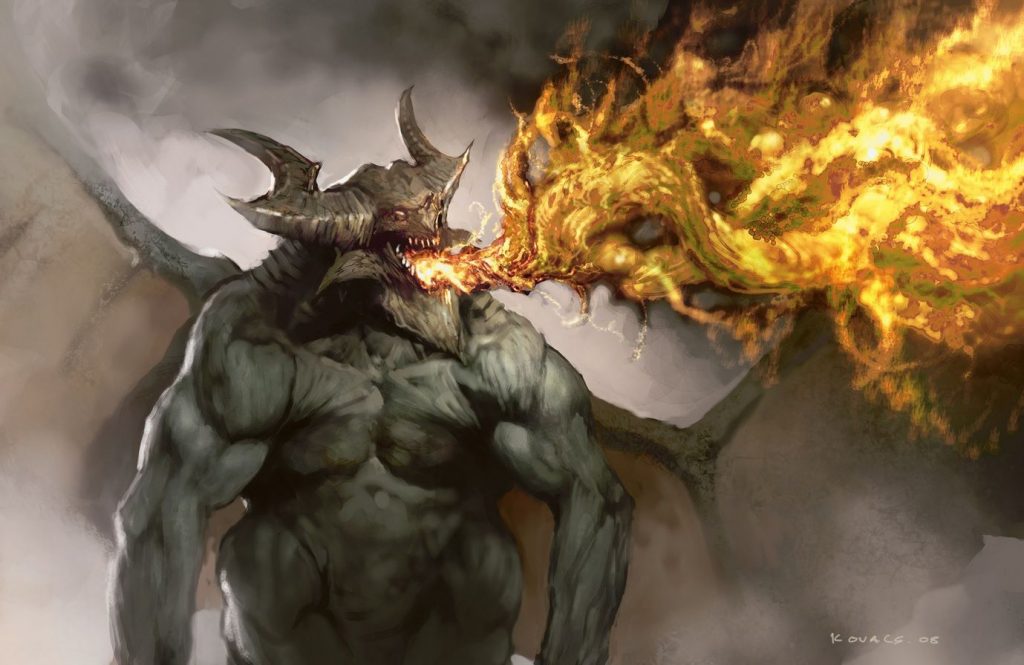
Breath of Malfegor | Illustration by Vance Kovacs
If you’re going to turn your starter decks into top tier meta decks—or, better yet, build your very own from scratch—you need to know which packs to go for. Not every set is going to hold up the same and each will have their own favored archetypes and strategies based on the cards available.
Common and Uncommon Power
A sure-fire bet to guide you to the best set is how powerful its commons and uncommons are. These are the cards you’ll be getting the most often and the easiest to get your hands on, whether by opening packs or crafting through wildcards (we’ll touch on these a bit further down), so a set having good ones will make deckbuilding much easier.
It’s basically having a good foundation to then build on using rares and mythic rares. While they’ll be the best cards most of the time, commons and uncommons can be just as good if not better in the right context.
Neon Dynasty does this exceptionally well in the current Standard. Yes, the set’s rares and mythics are also dynamite and you’d be crazy to not want to get your hands on them, but its commons and uncommons should tickle your fancy just as much.
The Current Meta
The next thing to think about when picking which set to focus on is what the current meta looks like. Check out recent decks that are doing well on sites like MTGgoldfish and Aetherhub or even just what seems to be showing up in the queues on Arena to get an idea of this.
The MTG Arena subreddit is also a great place to see where the meta is leaning. If control is all the rage, you can either lean towards a set that jumps on the bandwagon or go the opposite route and latch onto a set that has cards that counter control decks and strategies really well.
The Mana Base
Nonbasic lands and mana fixing are another facet that you should consider. Mana is what makes Magic go ‘round, without it you’re stuck in the mud, so having a strong land base is critical. Looking at potential mana fixing and fetch cards is going to put you ahead and help you figure out what set best suits what you’re trying to build, too.
If you’re looking to build a mono deck, you’re pretty safe with some basic lands, a handful of nonbasic monos, and not really a whole lot of mana fixing. Unless, of course, you’re going for stompy green where getting as much mana as possible as quickly as possible is the aim.
Dual- or tri-color decks (even 4- and 5-colors) mean that you need to pay attention to the nonbasic duals, fetches, and mana fixing cards much more. The more colors in your deck, even if it’s just a splash, the more important this is.
Standard Rotation
The last thing to think about is when Standard rotation will be coming along and which sets you’ll be losing. If you’re looking to be strategic and don’t have anything specific in mind, focusing on the newer sets that’ll be around for longer will give the cards you get a longer shelf-life in Standard and give you more value.
Buying Packs from Third Parties: Sometimes Cheaper
One thing you might not have considered is that you don't actually have to buy packs directly from the MTGA store. Another option is to buy codes that can redeem for packs.
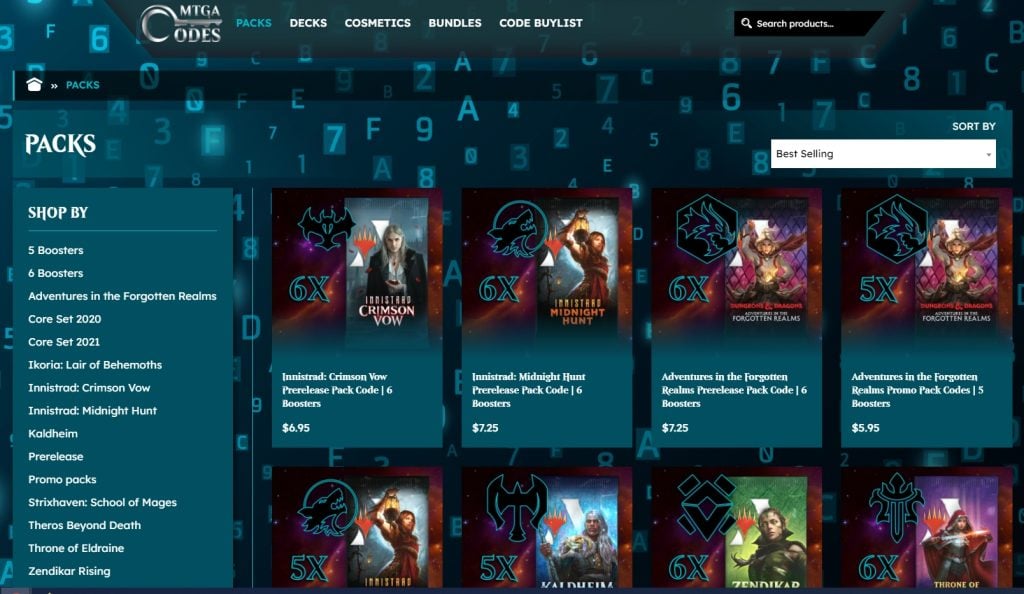
The place to do this is at a web store called MTGACodes.com. Once you complete your purchase, you are instantly given codes for packs. You can then type the codes into MTGA and add the packs to your collection.
Sometimes they even have products that aren't directly available in the MTGA store, like decks.

This could be a better option for you than buying packs because you can browse the decklists and know exactly which cards you're getting.
Digging a Little Deeper: Drafting
If you’re into something a little bit more challenging and competitive, drafting might be what you’re looking for. This could also be the best bet for free-to-play players since, if you’ve got a modicum of skill and a decent grasp on deckbuilding, you’re likely to get more bang for your gold.
Drafts are events on Arena that you can enter using either gems or gold where you pick one card at a time from rotating packs to form your deck and sideboard. Check out our Events Calendar for more details on these and the schedule.
You might be wondering why this is a good alternative to just buying or earning packs. To start, you get all the cards that you pick which means it’s easy to just grab cards that you know you want to add to your collection. A lot of people do this with rare cards which is called “rare drafting”. I wouldn’t suggest doing it with commons and uncommons because it’s still worthwhile to build a good deck with your picks. The rewards for winning not only pay for you to draft over and over again, but you also get a decent number of packs depending on how many wins you can manage. It’s also a better bet in general to build a deck around a great rare or mythic than commons or uncommons.
Building a collection through draft can be much more fruitful for a couple of reasons. First, you know that, at the very least, you’ll be getting a couple packs worth of cards (45 cards, to be exact) and exactly what they’ll be.
Next, by holding off on opening the packs you win until the end of the season (i.e., when the next set is released) you’ll take advantage of Arena’s “duplicate card protection”. Basically, this means that if you’ve collected every rare or mythic in the set and pull more when opening packs or drafting, you’ll get gems instead (20 for rares and 40 for mythics). If you haven’t collected all four copies of every rare/mythic in the set when opening packs, though, you’ll just get a copy of a rare/mythic you haven’t completely collected yet.
So, if you’re picking up rares and mythics through drafting and are able to complete the set, you’ll get a bunch of gems and (for common and uncommon duplicates) Vault progress when you open packs.
Drafting can be a little intimidating at first, but once you’ve got the hang of it, you’ll have an easier time picking cards to construct a competitive deck. We’ve got an Ultimate Draft Guide to get you started and give you an idea of how to pick cards. You can also use our draft simulator to practice and see what you’re in for if you go this route. And once you’re ready to start drafting, Arena Tutor will help you keep track of everything and give you pick recommendations, too.
Building Your Collection in Other Ways
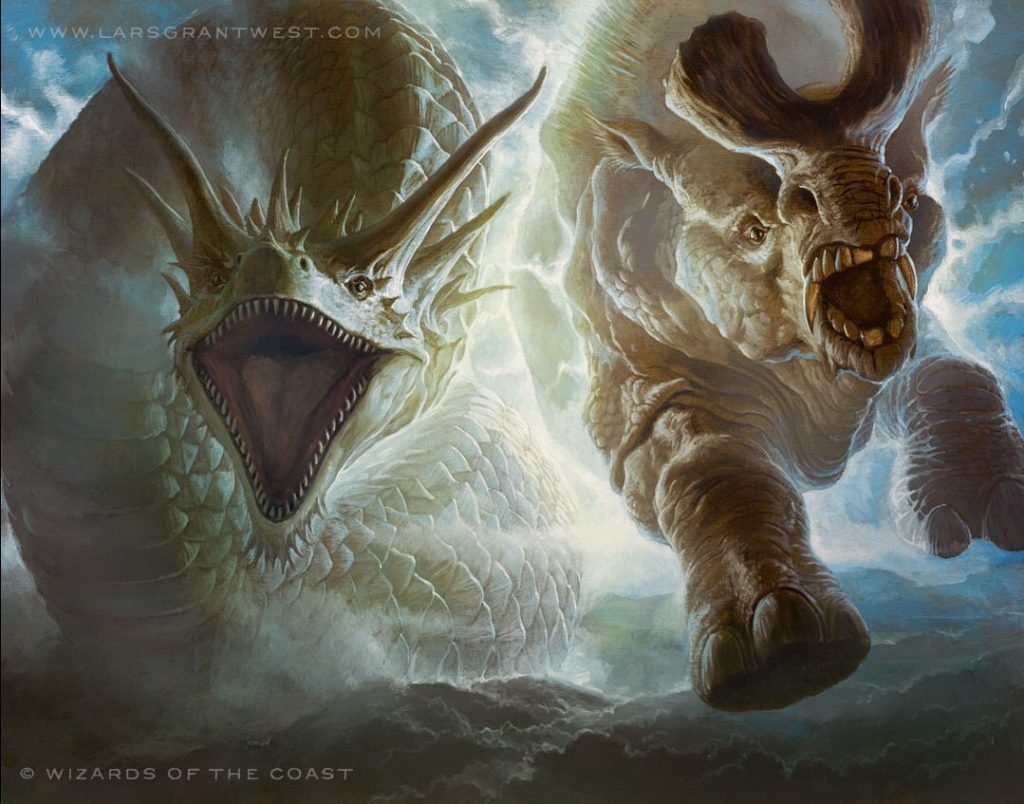
Wild Pair (Conspiracy: Take the Crown) | Illustration by Lars Grant-West
There are two other things I want to touch on that’ll help you build your collection and they feed into each other. Everything in Arena has a way of coming back around and helping to set something else up for success, which is nice. For their part, wildcards and the Vault go hand-in-hand, at least in one direction.
Filling Your Vault
We mentioned just above that duplicate cards will contribute to your Vault progress, but what the heck is a Vault and what does that mean? Well, once you’ve collected four of a common or uncommon card, each time you would get that card in a pack or from drafting you don’t just get nothing.
Instead, it goes into your Vault and contributes to your Vault progress. Once it’s at 100% you can open it and get one mythic, two rare, and three uncommon Wildcards. You can also choose not to open it and wait until it’s at 200%, but there aren’t any bonuses for doing so.
Earning and Spending Wildcards
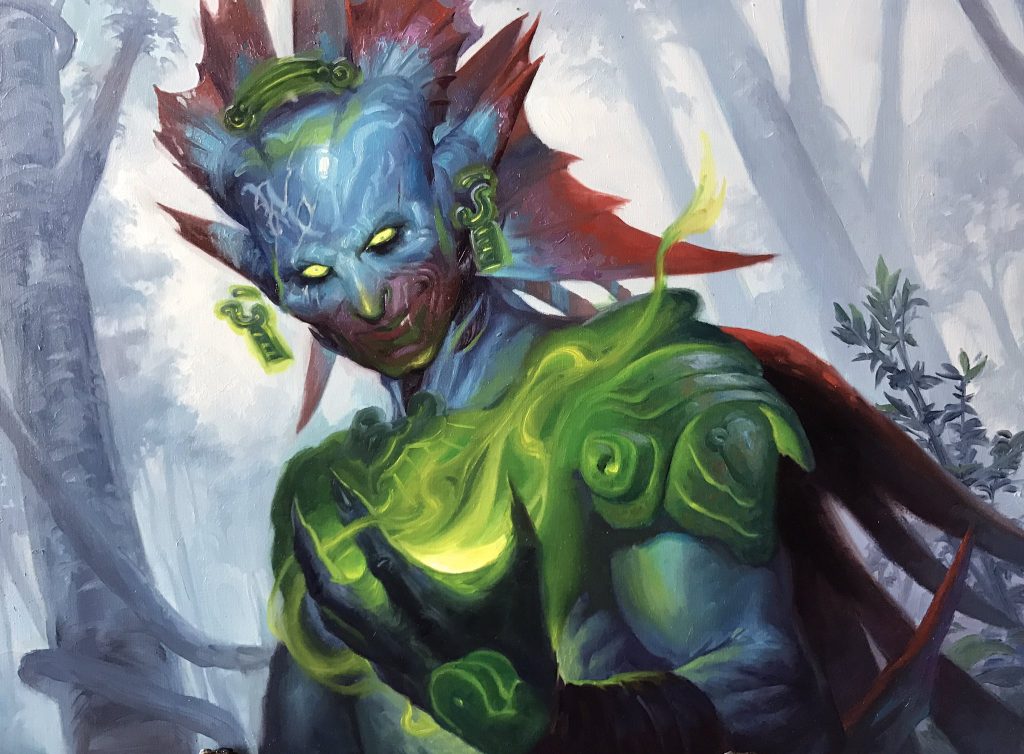
Overflowing Insight | Illustration by Lucas Graciano
OK, now what the heck are Wildcards? To put it simply, you can use Wildcards to craft cards of the same rarity. There are a few different ways to get Wildcards—one of which is the Vault we just went over—but really the best way is by opening lots and lots of packs. Which, funny enough, is also the most likely way you’re going to end up filling your Vault.
Playing the game and leveling up also nets you cards and packs through the Mastery system that could end up giving you a couple Wildcards as well. There has also been a new Wildcard Bundle introduced into the store with the release of Streets of New Capenna, which offers 12 rare and 4 mythic wildcards for $49.99.
While it might be tempting to just spend these on individual cards that tickle your fancy, I’d suggest holding on to them. The best way to spend your Wildcards is towards building specific decks and not just grabbing random cards. You never know what you’ll get in a draft, pack, or ICR reward, so using Wildcards towards a specific goal is more likely to pay off in the end. You’ll also have something concrete that can help you get more XP, wins, and rewards instead of a handful of mismatched cards that don’t really go with anything you’re looking to build.
Should I Buy Mythic Packs on MTGA?
Probably not — they're not really an amazing deal. We have a whole article that goes into the economy and pros/cons of mythic packs here.
Opening the Last Pack
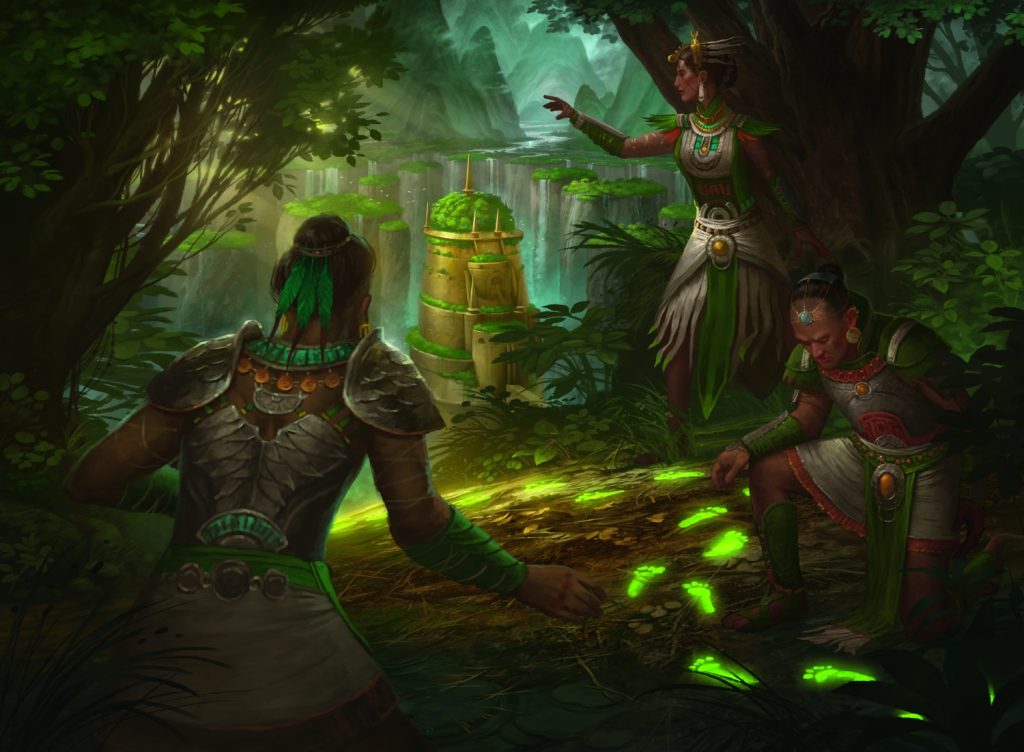
Path of Discovery | Illustration by Howard Lyon
I hope you learned something, because we’ve covered just about everything we can. We’ve got plenty of resources for new players, so browsing through our blog may give you some more places to jump off of.
Figuring out which set to buy packs for is an ever-evolving art, and the suggestion is likely to change based on the current meta, what format you’re looking to play, what archetype and colors you’re looking to build, and a bunch of other factors. If you do spend the gold or gems on a pack from a current set, you'll earn progress towards a golden pack of rares, like a rewards program. Hopefully we were able to shed some light on what to keep in mind and how to figure this out on your own.
What set are you partial to, and which one do you think is the hands-down best set in the current Standard? And finally, be sure you've downloaded Arena Tutor if you're a newer player looking to track your collection and matches.
Note: this post contains affiliate links. If you use these links to make a purchase, you’ll help Draftsim continue to provide awesome free articles and apps.
Follow Draftsim for awesome articles and set updates: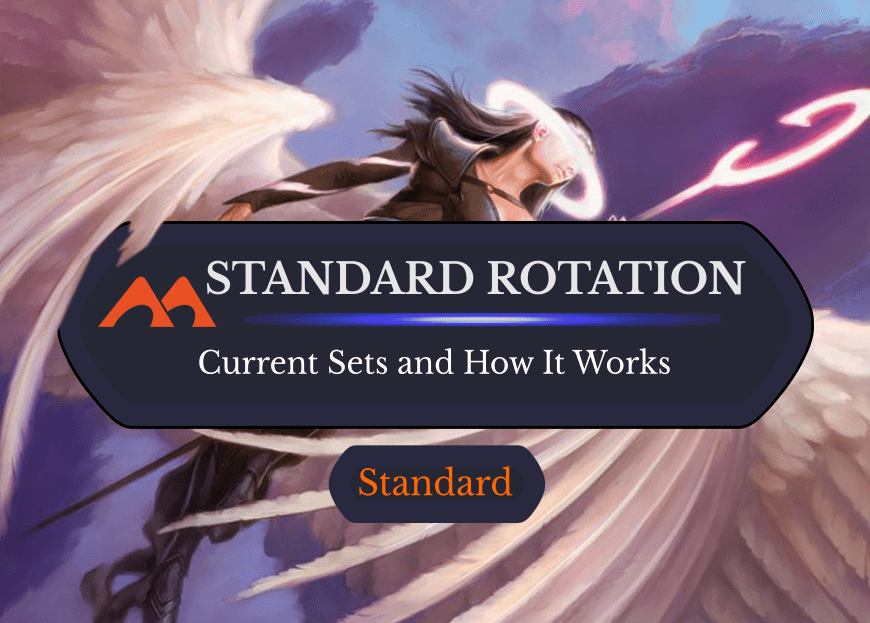
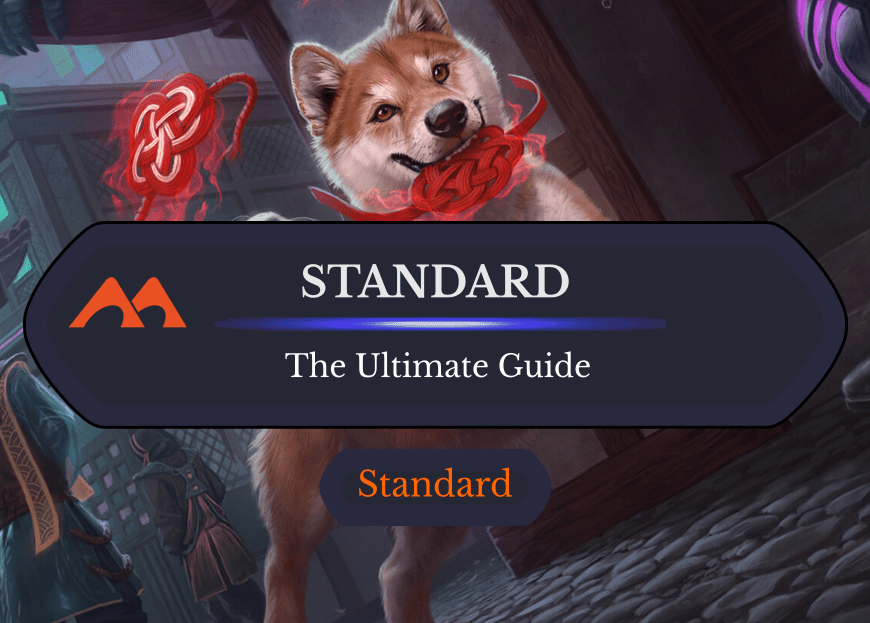
5 Comments
As a freshman, this article helps me so much. Thank you, Nikki!
Had to comment just to thanks for so much high quality contents. I’m an old school player coming back to magic (I’m from the second edition) after more than 12 years without playing. And so much changed… I’m reading through all your posts and learning so much. Thank you very much.
Glad to hear it. You’re very welcome!
How do I buy cards and decks for my son when he play on line? And how much would a new deck cost? I know the cards vary from card to card. I am a clueless mom. LOL
Hey Denise – you would have to probably either stand over his shoulder when he logs into the MTG Arena Store and buy something for him. Not exactly fun, but you could make a creative card to make it more of a gift.
Otherwise, an alternative is something like a “proxy” gift card – not a real one from Wizards, but one that can be redeemed for stuff in-game. For example, you can buy gift cards that can be redeemed for codes inside MTGA. Those codes can get you a few packs, decks, or fancy sleeves/avatars.
Add Comment